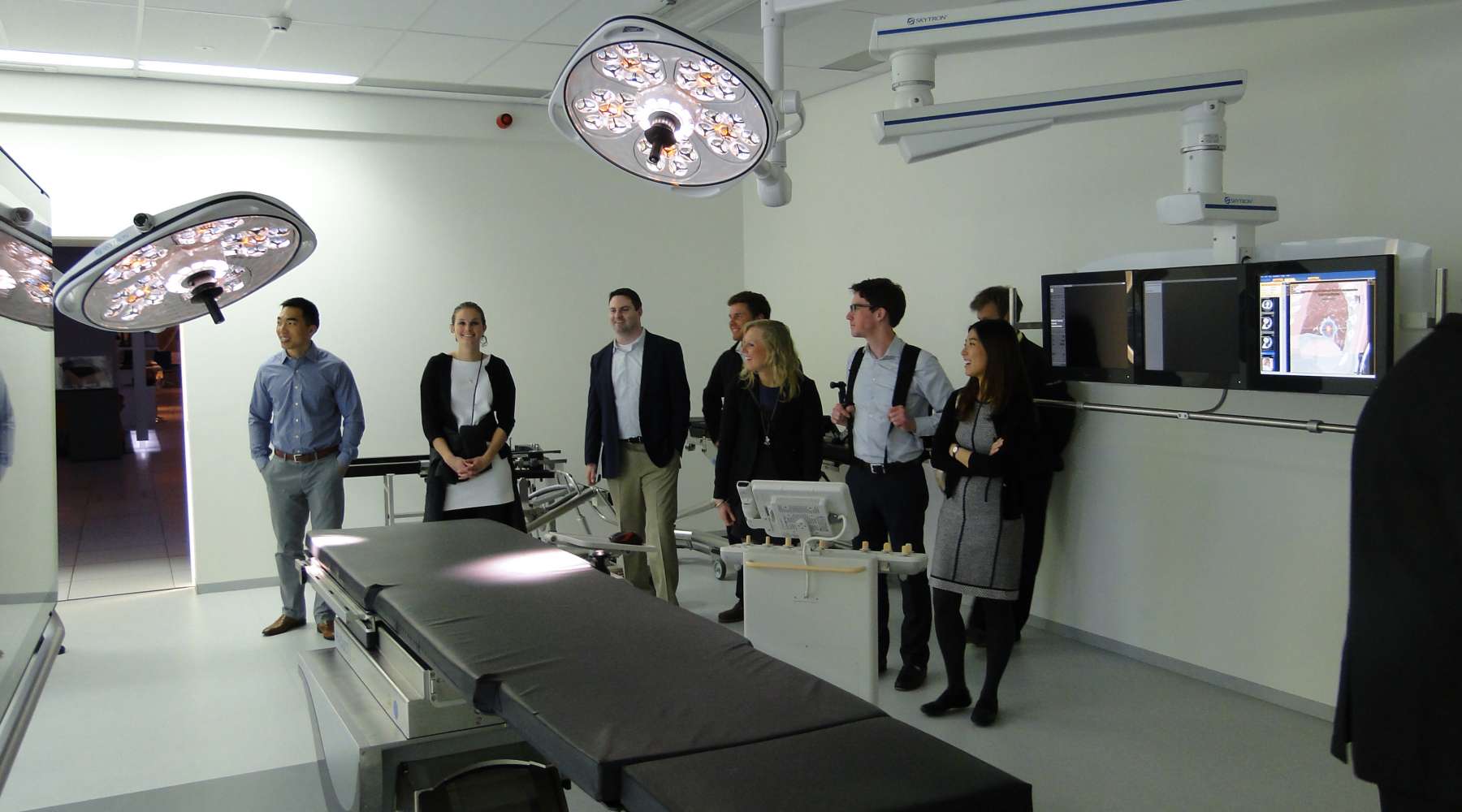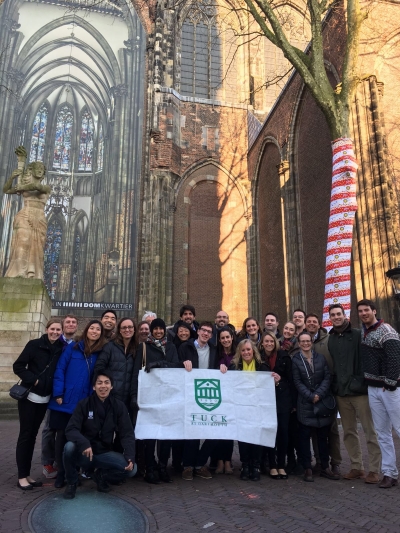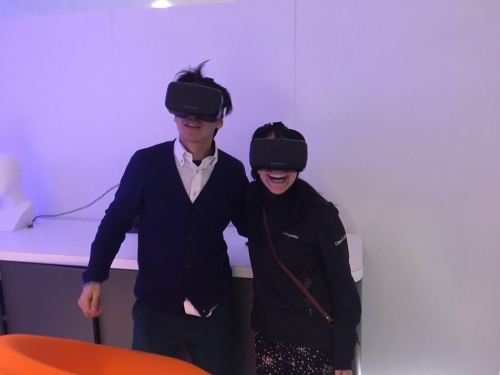
Part I by Anthony Hemming T’17
Going into the GIX, I felt like I had a basic idea of the differences between the U.S. and Dutch health care systems, but what I wanted to understand was why the Dutch system is organized the way it is, and if any of these elements could make sense in the U.S. Each country spends a significant portion of its GDP on health care (the Netherlands ranks second behind the U.S.), and each ranks highly for care quality (though the Netherlands outranks the US in most measures). However, the organization of the systems is very different: Dutch health care is organized around the principal of “solidarity,” in which every individual contributes to the social insurance system and every individual is guaranteed  an equivalent level of care. Solidarity extends to premiums as well: Individuals are responsible for the same basic insurance premium regardless of age, health, or background. A common topic of discussion during the week was “could a system like this exist in the U.S.?”, and the general consensus was that this was too huge a cultural change to occur for the foreseeable future.
an equivalent level of care. Solidarity extends to premiums as well: Individuals are responsible for the same basic insurance premium regardless of age, health, or background. A common topic of discussion during the week was “could a system like this exist in the U.S.?”, and the general consensus was that this was too huge a cultural change to occur for the foreseeable future.
As I reflected on the trip, however, I did a little more research on how solidarity was introduced into Dutch culture (and health care). I’d assumed this was just a reflection of longstanding social values, but this is not the case: In the middle of the twentieth century, a combination of social changes, economic and demographic transitions, and the aftermath of global conflict caused rapid changes in Dutch culture. Reorganization of health care and insurance was part of this change, and ideas about a social insurance system were actually some of the earlier proposals that moved Dutch society toward collectivism. Prior to the trip, I’d thought of the U.S. system as a product of our cultural values, and assumed that changes in health care organization would follow changes in society. What I learned is that changes in the health care system can be the bellwether for larger shifts in social values, and that these changes can be swift and unpredictable.
Part II by Julia Tsang T’17
As a career-switcher into health care, I wanted to tap into all the great resources at Tuck and learn as much as I could about the industry. The Netherlands GIX was a unique opportunity for me to hear from leaders in the Dutch health care system and compare our thoughtful discussions with what I’d learned about the US system thus far. My two main takeaways from the week are:
Professor Nardo van der Meer gave us an overview of the health care system, which I thought was illustrative of Dutch solidarity flowing into health policy. Four main acts inform the structure of the  system. I felt the first three acts (Insurance, Long-Term Care, Social Support) demonstrate Dutch solidarity, as they are comprehensive and ensure access to care for a portion of the population that has faced issues in the US. Under the Insurance Act, the basic health insurance package is very complete, and even refugees are insured once they enter the country. Under the Social Support Act, the local government provides personalized medicine in the form of kitchen table visits – government representatives individually visit homes to help plan and budget their care packages. I found it interesting that this level of access to care is a basic assumption in the Netherlands.
system. I felt the first three acts (Insurance, Long-Term Care, Social Support) demonstrate Dutch solidarity, as they are comprehensive and ensure access to care for a portion of the population that has faced issues in the US. Under the Insurance Act, the basic health insurance package is very complete, and even refugees are insured once they enter the country. Under the Social Support Act, the local government provides personalized medicine in the form of kitchen table visits – government representatives individually visit homes to help plan and budget their care packages. I found it interesting that this level of access to care is a basic assumption in the Netherlands.
We heard from entrepreneurs who are working on innovative ways to deliver elder care and empower “participatory” health care. An aging population and the rise of the consumer in health care are two trends that the Netherlands and the US share. Dr. Freek Lapré, an expert in long-term care, and Lucien Engelen, Director at the Radboudumc REshape Center for Innovation, gave amazing examples of innovative solutions, such as the Reminiscence Museum in Rotterdam and wearable devices for predicting cardiac problems. At Radboudumc, they are experimenting with a more patient-centered curriculum, so it will be interesting to see what outcome that has on future physicians’ practices.
Our trip to the Netherlands was an eye-opening immersive learning experience, during which we got to dive deep into health care. It was a truly once-in-a-lifetime way to learn about a different country and culture, and I took away lessons that will be invaluable as I pursue a career in health care.
Read previous posts on the 2016 GIXs: India, Cuba, South Africa, and Brazil.
 Anthony T’17 is an MBA/MPH joint-degree student with a background in health care software. He is interested in opportunities to use analytics and business insights to achieve the goals of the Triple Aim in health care organizations, and excited about a role with a more direct impact on the way care is delivered after Tuck.
Anthony T’17 is an MBA/MPH joint-degree student with a background in health care software. He is interested in opportunities to use analytics and business insights to achieve the goals of the Triple Aim in health care organizations, and excited about a role with a more direct impact on the way care is delivered after Tuck.
 Julia T’17 is a first-year student at Tuck. She attended Northwestern University where she received her bachelor’s in economics. Prior to Tuck, Julia was a senior analyst at Nielsen.
Julia T’17 is a first-year student at Tuck. She attended Northwestern University where she received her bachelor’s in economics. Prior to Tuck, Julia was a senior analyst at Nielsen.